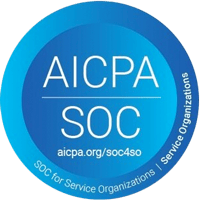Compassion fatigue, otherwise known as burnout, can take a physical and mental toll on first responders, physicians, and nurses who provide patient care or work in emergency situations.
The National Academy of Medicine (NAM) reports that at least 50% of caretakers across medical fields describe serious symptoms of burnout, including emotional exhaustion, cynicism, and low sense of professional accomplishment. If left untreated, the unfortunate side effects of nurse burnout can lead to poor job performance, medical mistakes on the job, high turnover rates, and even suicide.
As a registered nurse and healthcare executive, my biggest pain point over the decades has been exactly this – nursing fatigue and turnover. The problem has been amplified by the pandemic, resulting in many nurses stepping away from the bedside to seek non-clinical opportunities. Nurses are known for migrating across facilities, geographies, and specialties—but when this migration is provoked by stress and fatigue, it’s worth asking how employers contribute to burnout?
When it comes to nursing staff, employers continue to spend more effort on recruiting, and not enough on retaining the good employees they already have. We need to implement holistic retention programs that nurture nurses’ professional and personal growth needs to successfully achieve work-life integration – and this means addressing compassion fatigue. Nurses aren’t just looking for higher pay. They are in search of employers who genuinely care for their overall well-being.
How to Reduce Nurse Burnout
The US Centers for Disease Control have provided the following guidance for managers to specifically help reduce nurse burnout:
- Provide daily communication rounds with staff to share information on work hour needs and work processes so they can feel like a part of the solution.
- Avoid repercussions for those who may have restricted availability.
- Educate staff on sleep and self-care strategies.
- Try to limit scheduling staff for extended shifts (>12 hours). Extended shifts increase the risk for fatigue-related incidents, along withs workers’ exposure time to infectious diseases and other workplace hazards.
- During times of crisis, provide a minimum of 10 hours off in-between shifts (for each 24-hour period), and one full day of rest per seven days for adequate sleep and recovery.
- Provide strategies for staff to take short breaks every 2 hours during their shifts.
- Consider providing supportive services onsite (e.g., laundry, sleeping rooms, healthy food and drinks).
- Monitor staff for signs and symptoms of fatigue (i.e., yawning, difficulty concentrating, emotional instability, flawed logic, poor communication).
- Ensure all staff have a buddy in place to monitor for signs and symptoms of fatigue and other poor health outcomes.
- Consider creating a signal or some procedure for workers to report when they feel they or a colleague are too fatigued to work, potentially contributing to an unsafe situation.
How to Retain Nurses and Reduce Turnover
In addition to the above strategies to combat caregiver burnout, it’s important to establish a retention program to attract the best nursing candidates to your facility. A few strategies that have worked for me include:
- Develop career paths and opportunities for nurses looking to specialize or grow into management.
- Maintain high levels of transparency in your decision making processes.
- Offer flexible scheduling options to achieve better work-life integration.
- Consider mental health offerings, including peer support programs.
- Provide an array of flexible benefit options to choose from, including lifestyle benefits such as commuting, childcare, fitness, and financial planning assistance.
- Recognize the contributions of your nursing staff regularly.





